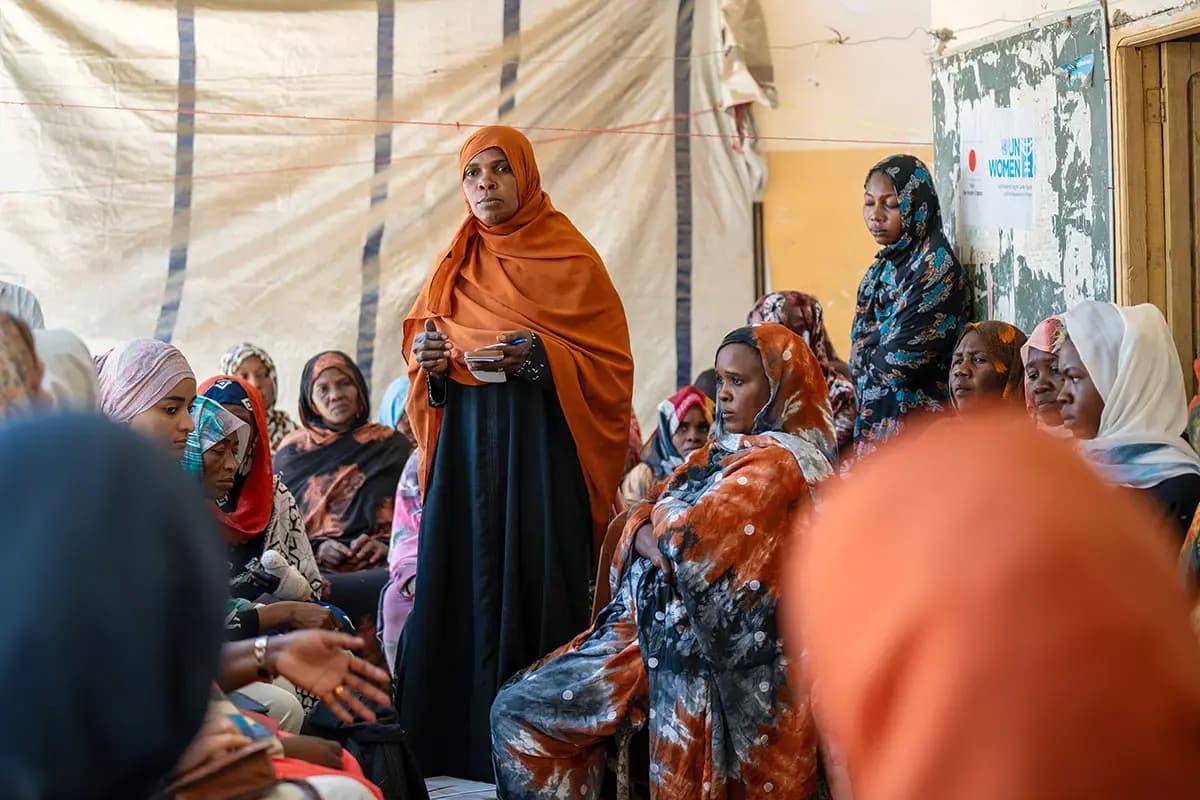We're loading the full news article for you. This includes the article content, images, author information, and related articles.
A devastating UN report reveals women are being killed, displaced, and excluded from peace talks at unprecedented rates, raising alarms for regional stability and humanitarian efforts in Kenya, a key host of refugees from neighbouring conflict zones.

The world is grappling with the highest number of active conflicts since 1946, creating an unprecedented and devastating reality for women and girls, according to the 2025 UN Secretary-General's Report on Women, Peace and Security. Released to mark the 25th anniversary of the landmark UN Security Council Resolution 1325 on women, peace, and security, the report paints a grim picture of reversed progress and escalating, targeted violence.
An estimated 676 million women and girls now live within 50 kilometers of a deadly conflict zone, the highest figure since the 1990s. The data, presented on Monday, October 27, 2025, reveals a catastrophic surge in violence: civilian casualties among women and children have quadrupled in the last two years, and documented cases of conflict-related sexual violence have skyrocketed by 87% since 2022.
“Women and girls are being killed in record numbers, shut out of peace tables, and left unprotected as wars multiply,” stated Sima Bahous, UN Under-Secretary-General and Executive Director of UN Women. “Women do not need more promises; they need power, protection, and equal participation.”
While the report’s focus is global, its findings have profound implications for Kenya and the broader East Africa region. Kenya, a nation that has historically hosted large refugee populations from neighbouring countries like Somalia and South Sudan, is directly impacted by the instability. The escalating conflicts detailed in the UN report exacerbate regional displacement crises, placing immense strain on Kenya's resources and humanitarian infrastructure.
The UN data highlights that by the end of 2024, 123.2 million people were forcibly displaced worldwide, with over 60 million being women and girls who face heightened risks of gender-based violence (GBV). This global trend is mirrored in the region, where conflicts in Sudan and the Democratic Republic of Congo (DRC) continue to drive women and children across borders, many into camps in Kenya like Dadaab and Kakuma. These women often arrive having survived horrific violence and face ongoing threats to their safety and well-being.
Kenya has made commitments to protect women in conflict through its National Action Plans for the implementation of UNSCR 1325. The first plan (2016-2018) and the current second plan (2020-2024) aim to increase women's participation in peace processes and protect them from GBV. However, the UN report’s findings on the global exclusion of women from peace negotiations—where women comprised just 7% of negotiators and 14% of mediators in 2024—underscore the challenges Kenya and other nations face in translating policy into practice.
The report also sounds the alarm on record levels of hunger driven by conflict. In 2024, 295 million people faced acute food insecurity, with nearly half residing in war zones. Women and girls are disproportionately affected. The report notes that 10.9 million pregnant and breastfeeding women suffered from acute malnutrition across 21 crisis-hit countries in 2024. A third of these women were in the DRC, a conflict that directly contributes to refugee flows into East Africa.
This crisis is compounded by a stark and dangerous imbalance in global spending. While global military expenditure surpassed $2.7 trillion in 2024, a new record, women's organizations in conflict zones received a mere 0.4% of bilateral aid. This chronic underfunding leaves frontline organizations, which are often the primary providers of support for female survivors, on the verge of collapse.
The 25th anniversary of Resolution 1325 was intended to be a milestone of progress. Instead, the 2025 report serves as a dire warning that hard-won gains are being systematically dismantled. UN Women has called for a “gender data revolution,” stressing that without disaggregated data, the specific realities women face in war remain invisible, undermining accountability and effective policy responses.
For Kenya, the report’s findings are a crucial call to reinforce its own commitments under its National Action Plan and to champion the inclusion of women in peace and security dialogues within the region, including through bodies like the Intergovernmental Authority on Development (IGAD). As conflicts rage in neighbouring states, the protection of refugee women and girls, accountability for perpetrators of sexual violence, and the meaningful participation of women in resolving these crises are not just global imperatives, but critical components of regional stability. The safety of women, as the UN report makes devastatingly clear, is a barometer for the peace and security of all.
Keep the conversation in one place—threads here stay linked to the story and in the forums.
Other hot threads
E-sports and Gaming Community in Kenya
Active 6 months ago
Popular Recreational Activities Across Counties
Active 6 months ago
The Role of Technology in Modern Agriculture (AgriTech)
Active 6 months ago
Investing in Youth Sports Development Programs
Active 6 months ago